How To Regrow Hair On A Bald Spot (Alopecia Areata)?
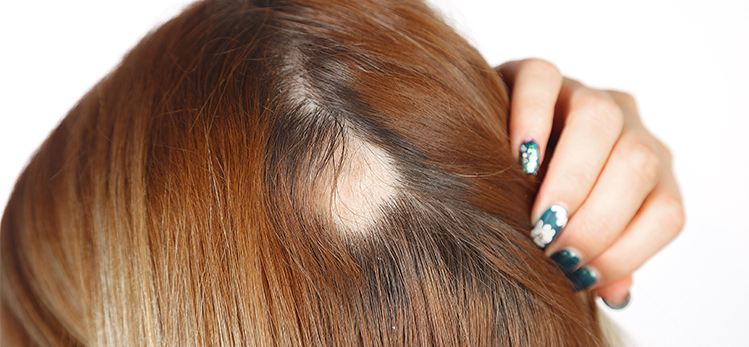
We often regard our hair as our crowning jewel. So when suddenly we find a small or a big bald spot, it is but natural for us to panic and sift through internet results in search of ways to regrow our hair. Well, this article will tell you everything you need to know about bald spots and how you can get them treated.
What Causes Bald Spots?
Autoimmune Disease – Autoimmune diseases like alopecia areata are a big cause of bald spots for some people. In this condition, the body’s immune system attacks the tissues and hair follicles. This gives rise to hair breakage and fall out. Hair growth also stops. Small patches of sudden hair loss start developing, causing spot baldness in those areas.
Other medical issues – Other medical conditions like thyroid, vitiligo, and eczema can also cause spot baldness. Some sort of recent illness can also trigger this condition.
Stress – Some may associate their loss of hair with the stressful life that they are leading. Severe anxiety can lead to stressful living conditions, and this can develop hair loss problems. Stress can cause three types of hair loss which are Telogen effluvium, Trichotillomania, and Alopecia areata.
Gentic – Yes, this problem can arise due to the genes that you have inherited from either of your parents. Genetic baldness is very common both in men and women and is more obvious in men.
Hair Styling – This is probably the most neglected and ignored reason behind the cause of this condition. Always remember that the way you handle your hair will show in its health. Too tight hairstyling and too much use of chemicals and hairstyling tools can also lead to this condition. Harsh combing and rough handling can also make a patch of hair fall out suddenly.
Fungal Infection – if there is any fungal infection on the scalp, like ringworms, it can make the hair of that portion fall out, thereby creating bald spots.
Don't Ignore the Signs

We all experience some hair loss daily. But it is important to understand the signs of hair loss problems at the beginning to treat the same effectively. With the problem of bald spots, there may be some signs or symptoms. Careful observation of these symptoms will help in handling them in a better way. Some signs of this type of hair loss condition are:-
One or more circular bald patches become visible within a short span of time.
Hair falls out and thinning hair.
Along with hair falling out from the scalp, hair loss can be in other parts of the body.
Occasional itching and burning of the skin before hair fall.
Nail pitting is another sign. Nails can also develop red spots and cracks or become rough.
Treatment
After an accurate diagnose of the reason for sudden bald spots, your dermatologist may advise the following treatment options:
Immunotherapy Medicine - This medicine is one of the treatments for bald spots. You can apply this once a week like a lotion. It is used on the scalp. But please remember it may have side effects like an allergic reaction.
Corticosteroid medicine – This medicine is used both in injection form and in ointment form. The cream is often used with the injection for better results. The injections are given at the areas of hair fall at a gap of 4 to 12 weeks. This is also available in oral form.
Going by the above discussion, one thing is sure that the treatments are there, but the result may vary from person to person. Also, they come with side effects. Hence, once you notice the symptoms, please consult your dermatologist. He can guide you properly on which medicine is best for your condition after judging and analyzing the side effects.
Dealing with the Problem
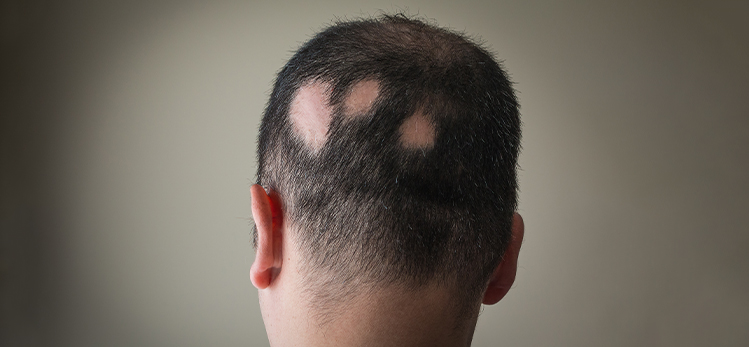
Please remember that in most cases, hair grows back. It may take some time for the treatment to show its result. Also, the results are not the same for all. The key is to treat it just as a problem and not let it affect your health and thinking process. Keeping a positive mindset is very necessary. Also, you have easy solutions to deal with bald spots while the treatment is going on. You can speak to your healthcare provider about how to manage the stress. Also, wigs and other cosmetics are available to help you hide the bald patches. So, just don’t let the situation get over you and tackle it in a balanced manner.
Conclusion
Consult your doctor in time and consider the medicines and side effects before starting with the treatment of bald spots. Hair can regrow in these spots. You just have to be patient and seek help to cope with emotional stress if you are feeling it. Also, maintaining a realistic approach is very important.
Myth Busters HairFall
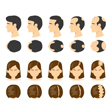
Androgenetic Alopecia - Everything You Need To Know
Have you been experiencing excessive hair fall over a prolonged period of time? It could be an early sign of androgenetic alopecia. It is a hair loss disorder common in both genders and can lead to progressive thinning and even baldness in some patients if not caught and treated early.

How To Make Hair Grow Faster For Men
A head full of healthy hair is a matter of confidence. Hair has its own mechanism of growing and shedding, and it is when this mechanism is thrown off that growth is hindered. Especially in the case of males, hair growth faces a lot of hiccups that can easily be managed.
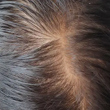
Female Pattern Baldness - Causes & Treatments
Have you suddenly noticed an increase in the number of hair strands on your pillow in the morning? Or is your ponytail getting thinner by day? Well, you might be suffering from female pattern baldness. While that does sound scary, identifying it early on is key to treating this condition effectively. So keep reading to know what this is, how you can identify it, and most importantly, what treatments you can avail of to get your beautiful lustrous hair back.
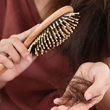
What Are The Reasons For Hairfall?
Almost everyone experiences some amount of hair thinning over the years. Shedding around 50 to 100 single strands of hair per day is considered normal. However, losing more than 150 strands a day, experiencing sudden thinning, or developing circular bald patches on your scalp are reasons for concern. Hair loss occurs when new hair doesn’t grow fast enough to replace the amount of hair you lose daily. Hair can fall due to various reasons, with hereditary hair loss and poor nutrition being the most common hair fall reasons.

Expert Approved Tips For Hair Growth
What can be more debilitating than seeing hundreds of hair strands shedding from your scalp every time you brush your hair? Also, excessive molting occurs during seasonal changes that can be very stressful for you. Although it’s okay to lose between 50-100 strands every day, according to the American Academy of Dermatology, the problem occurs when you start shedding more than normal. But that doesn’t mean you have to feel helpless as there are ways to grow your hair back. Even if you are coping with baldness or alopecia, certain hair growth tips from dermatologists can come to your rescue. Read on to discover how these tips can be your savior when abnormal hair fall problems are in sight.
Trending Videos
+ 4 Sources
LMRC - GGI-CO-A2-DMA-300026127-300026127-WM-J21-282
© 2021 Dr. Reddy’s Laboratories Ltd. All rights reserved.